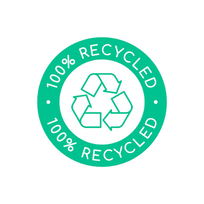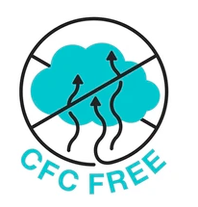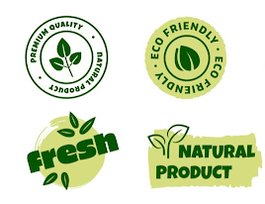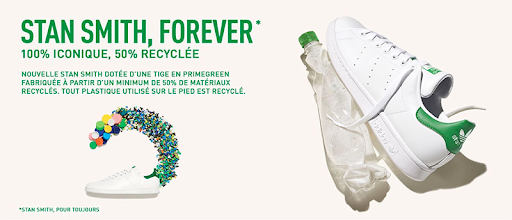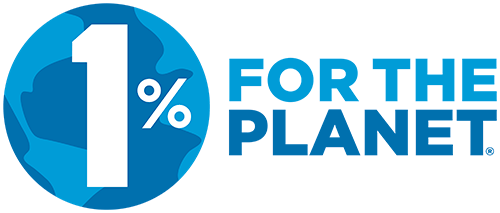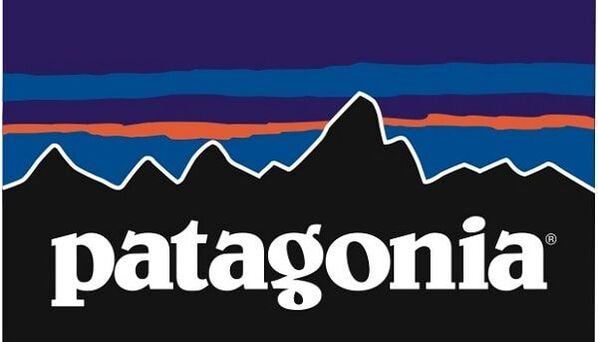When Green Isn't Clean: Understanding Greenwashing
If you're reading this article, chances are, you're concerned about the environment and keen on making conscientious purchases. You might already opt for products with sustainability labels, prioritize items made from recycled materials, or support brands actively engaged in environmental causes. However, it can be difficult to know if what you’re buying is actually sustainable or if you’re being subject to greenwashing. We are here to help!
What exactly is greenwashing?
Greenwashing is a marketing ploy in which companies intentionally use deceptive strategies (via labels, packaging, or advertising) to persuade the public that their products or mission are environmentally friendly. They are appealing to consumers’ moral conscience. Companies know that environmentally-conscious consumers are willing to pay more for sustainable products. In fact, a 2017 Cone Communications study on Corporate Social Responsibility noted that 87% of consumers were more likely to purchase a product because the company supported a cause they care about. This data highlights how these marketing tactics effectively persuade individuals into believing that buying the “green” item equates to an environmentally responsible choice.
In reality, these companies often just make more of a profit.
In most cases, these so-called “sustainable” products are directly tied to carbon emissions, water pollution, deforestation, and much more.
In reality, these companies often just make more of a profit.
In most cases, these so-called “sustainable” products are directly tied to carbon emissions, water pollution, deforestation, and much more.
How do I spot greenwashing?
A number of years ago, Terrachoice, an environmental marketing agency, published the Seven Sins of Greenwashing to help consumers identify and differentiate between truly sustainable products and those that just purport to be.
|
The Hidden Trade-Off
This is one of the most common forms of greenwashing. Companies promote one sustainable aspect while neglecting to mention the larger and more important environmental issues in other areas. For example, a company might advertise that its shirt is made with recycled material but neglect to mention the incredible amount of water used to produce it or the fact that they use unethical practices in their factories.
|
|
No Proof
This deceptive tactic involves a company making a sustainability claim without any credible proof to support it. Often, companies will put these claims on their packaging without providing any verifiable information, either on the packaging itself or on the website. A common example of this is when a package is claimed to be made with “ocean plastic” or “ocean-bound plastic”. This makes the consumer feel as though, by purchasing that product, they are helping to either remove plastic from the ocean or prevent it from ending up there. In reality, complex supply chains make it very difficult to trace back plastic. Unless they’re certified by a trusted label with concrete evidence to support their claim, it’s likely just greenwashing.
|
|
Vagueness
Companies use this practice when they use buzzwords such as “green”, “eco-friendly”, or “natural”. They make broad or general statements without giving specific information on how a product is actually sustainable or environmentally friendly. Very often, the packaging will also be green and/or have foliage on it, subtly encouraging the consumer to subconsciously associate the product with sustainability, while the company evades committing to anything specific.
|
|
Irrelevance
When companies make environmental claims that, while potentially truthful, are entirely irrelevant. They do this to mislead buyers seeking sustainable products into thinking that their company’s product is more environmentally friendly than their competitors’. A common example is when deodorant companies boast that their cans are CFC-free. However, this claim is entirely irrelevant as CFCs (chlorofluorocarbons) were banned globally in 1989 as they greatly contribute to ozone layer depletion.
|
|
The Lesser of Two Evils
Companies will use this greenwashing strategy by claiming that their “eco-friendly” product is better than the alternative, when in reality they are ignoring the overall damaging nature of their product or industry. A common example is coffee capsule companies that assert their capsules to be fully recyclable, conveniently avoiding the reality of the polluting nature of the capsules to begin with.
|
|
Fibbing
In essence, this is just lying! Companies falsify statistics, certifications, or claims to pretend that they or their products are more environmentally friendly than they are. In the United States, this was a big issue when companies falsely claimed to be Energy Star certified. Similarly, with plastics, some companies claim that their products are fully recyclable when they are not.
|
|
False Labels
As the name might suggest, this sin involves the implication of independent third-party certifications or awards when none such exist. Oftentimes, companies do this through either clever branding with words or images to give the impression that their product has been verified sustainable. In this instance, companies will also usually make the label green and have those vague keywords included, such as “certified 100% natural ingredients”.
|
To help consumers differentiate between truly sustainable products and companies engaging in greenwashing, in January of this year the EU adopted its new Greenwashing Directive. This directive targets the environmental and social assertions made by companies across their branding, product names, imagery, and labels, aiming to address prevalent greenwashing tactics. Among the directive's provisions, companies are now compelled to substantiate their sustainability claims with concrete data, while labels lacking independent third-party verification programs are prohibited. It is a promising stride towards transparency and accountability, and one can only hope that other countries will swiftly follow suit!
Let’s take a look at some real life examples of greenwashing...
|
Nike’s Move To Zero campaign boasted a reduction of 64% in greenhouse gas emissions in 2022. Sounds great, right? There’s only one problem. Nike failed to mention in its publicity that those reductions came from their Nike-owned and operated facilities, which account for a mere 2.5% of their total emissions. Nike doesn’t own any of its factories and they currently have no ambition to reduce their manufacturing and transportation emissions (you know, the other 97.5%). So while it might seem like Nike is making great strides in their environmental impact, reading the footnotes of their impact report tells a much different story.
|
In this graph, we can see that Scope 1 and 2 emissions, which are the emissions caused by a company itself, make up only a tiny portion of the total emissions pie. The vast majority of Nike’s emissions come from further up and down the supply chain (namely manufacturing and transportation, which Nike is responsible for but doesn’t technically own).
|
The presence of florals and greenery makes the consumer subconsciously feel that this product or company is environmentally minded.
|
H&M touted its commitment to sustainability by promoting their Conscious Collection, setting up clothing recycling bins in their stores, and using scorecards to communicate the environmental impact of their products. While the Conscious Collection boasted products using organic cotton and recycled polyester, there was no third-party label to ensure that the cotton was actually organic. And while recycled polyester is better than virgin polyester, it still releases microplastics with each wash. An investigation into their recycling bins, which implied that old clothing would be made into new garments, exposed that the vast majority of clothes ended up in the Global South, not at recycling centers. Another inquiry uncovered that H&M's scorecards promoted entirely false environmental ratings, frequently relying on misleading or blatantly deceptive data. A whopping 96% of their environmental claims were found to be misleading!
|
|
This ad, since taken down, markets the new Stan Smith shoes as being “100% iconic, 50% recycled.”
|
The second largest activewear brand in the world, Adidas is often seen as Nike’s slightly more sustainable rival. In 2015, they partnered with Parley for the Oceans to create shoes made from recycled ocean plastic and they boast of their target to make 90% of their articles “sustainable” by 2025. However, a look at their website shows that they have quite lax definitions of sustainable, with the worst example showing that they consider a shoe sustainable if a mere 20% of its weight consists of “environmentally preferred materials.” In 2021 in France, Adidas was penalized for misleading customers with their greenwashing claims. Using an ad that claimed 50% recycled material in one of their shoes, this naturally led consumers to believe that half of the materials used to make the shoe were recycled materials, which was not true. And really, how sustainable can a brand claim to be when they released a shoe last year that was only meant to only be worn once?
|
So how can we tell the difference between the genuine stuff from the greenwashing?
Transparency - If a company is really doing all that they say they are to reduce their environmental impact, then that information will be easily and readily available to the consumer. Check product labels and company websites for facts and data. They should have concrete information on their manufacturing practices, including water and air quality, greenhouse gas emissions, energy use, and worker conditions.
Trusted Labels - look for reputable, traceable, and trusted organizations’ labels. There is, however, a caveat: While certifications help indicate a company’s commitment to the environment, they are not blanket labels that determine a product or company to be 100% sustainable. Like with everything, there can often be a lot of nuance and it is important to look at the company’s practices as a whole. That being said, these labels are a great start. A few labels we love in the outdoor industry:
|
B Corp Certified - In order to obtain this certification, companies must meet high social and environmental standards.
|
1% for the Planet - Businesses that are part of this organization donate 1% of annual sales (not profits!) to environmental organizations. Trails and Roots is a proud member of this network!
|
Fair Trade - These labels ensure that the producers are paid and treated fairly while upholding strong environmental standards.
|
Cradle to Cradle - This label is awarded to products with fully reusable raw materials. The materials don’t degrade in value or end up in landfills; they are recycled back into the supply chain to make equal or better products.
|
So where do I shop?
First and foremost, it’s important to note that the most environmentally friendly choice is often what you already own! It can often feel like there’s a lot of pressure to go out and buy the latest and greatest in eco-friendly gear, but overconsumption partly fuels the problem. Extending the lifespan of existing clothing in your closet through proper care and use is a powerful sustainability practice.
Secondly, no brand is perfect. Many brands excel in one area but could do better in others. When choosing a brand to shop from, it’s important to look at their sustainability efforts overall.
Lastly, sportswear is inherently difficult to make 100% sustainably. Balancing the need to make flexible products that wick sweat with environmental considerations isn’t always straightforward. That being said, when it’s time to buy new gear, here are some of our favorite brands that are talking the talk when it comes to sustainability.
Secondly, no brand is perfect. Many brands excel in one area but could do better in others. When choosing a brand to shop from, it’s important to look at their sustainability efforts overall.
Lastly, sportswear is inherently difficult to make 100% sustainably. Balancing the need to make flexible products that wick sweat with environmental considerations isn’t always straightforward. That being said, when it’s time to buy new gear, here are some of our favorite brands that are talking the talk when it comes to sustainability.
|
Patagonia
In September 2022, Patagonia sold its company so that the only shareholders are the Patagonia Purpose Trust and the nonprofit Holdfast Collective. They are part of 1% for the Planet (which was founded by Patagonia’s founder, Yvon Chouinard), are transparent and responsible with the source and production of their products, and promote buying their products secondhand. Their motto “Wear It, Repair It, Hand It Along!” serves as a guiding principle that can be found stitched on the inside of many of their products.
|
|
SOAR Running
This european-made company has conducted a carbon audit and the vast majority of its products are transported via road rather than air. This all means that there are more environmental and workers’ protections and reduces its overall emissions. Additionally, they promote extending their product’s life by offering free repair service to keep products longer.
|
|
NNormal
Kilian Jornet’s endeavor to bring us durable, sustainable running gear is one of the most transparent brands out there. They’re taking steps towards being almost completely carbon neutral (meaning they remove the same amount of carbon from the atmosphere that they emit), communicate the carbon footprint of the products, push circularity by promoting buying less of, repairing, and recycling their products, and are certified B Corp.
|
QUIZ TIME!
Now that we’re all greenwashing experts, it’s time to test your knowledge. Can you spot the greenwashing in these examples?


